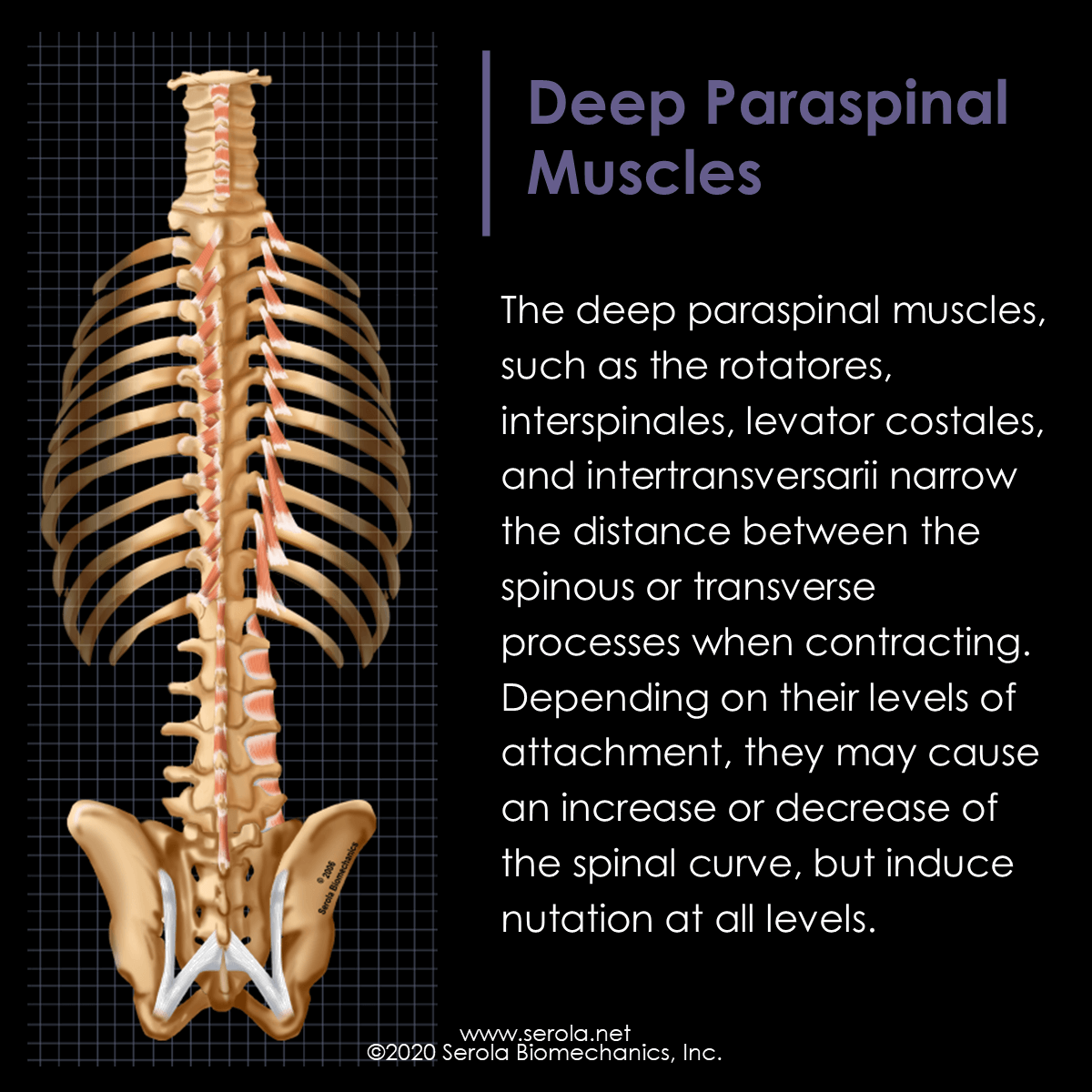Deep Paraspinal Muscles

The deep paraspinal muscles, such as the rotatores, interspinales, levator costales, and intertransversarii narrow the distance between the spinous or transverse processes when contracting. Depending on their levels of attachment, they may cause an increase or decrease of the spinal curve, but induce nutation at all levels.
Functions:
- Occiput-C5: Observation reveals that they increase the cervical lordosis, inducing nutation.
- C5-L3: Observation reveals that they decrease the thoracic kyphosis, inducing nutation.
- L3-Sacrum: Observation reveals that they increase the lumbar lordosis, inducing nutation.
These muscles function as spinal stabilizers to secure and protect the spine. Like other nutation muscles, their activity increases during weight bearing. Their small size enables the spine to make minute adjustments during load transfer in bending, lifting, and twisting movements.
Because they are inhibited in a nutation lesion, the entire spine is destabilized, to a degree proportional to the degree of SIJ lesion. Distance from the sacroiliac joint may also influence the degree of contraction.
Laterality of the lesion is important, as those, and other nutation muscles on the side of lesion, will be more inhibited, while those on the contralateral side will be more contracted. For example, in a right nutation lesion, the left paraspinal muscles, in concert with the left superficial erector spinae and left spinalis thoracis, will act to flatten the left side of the thoracic curve and rotate the trunk to the right.
Thus, stabilizing the sacroiliac nutation lesion can benefit the entire structure and reduce the likelihood of injuries, while improving performance.

